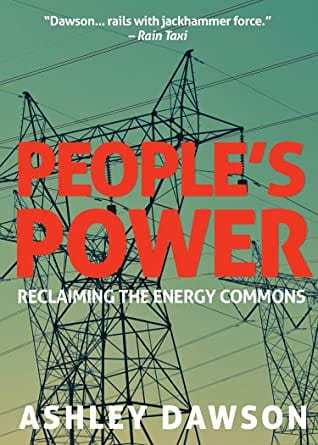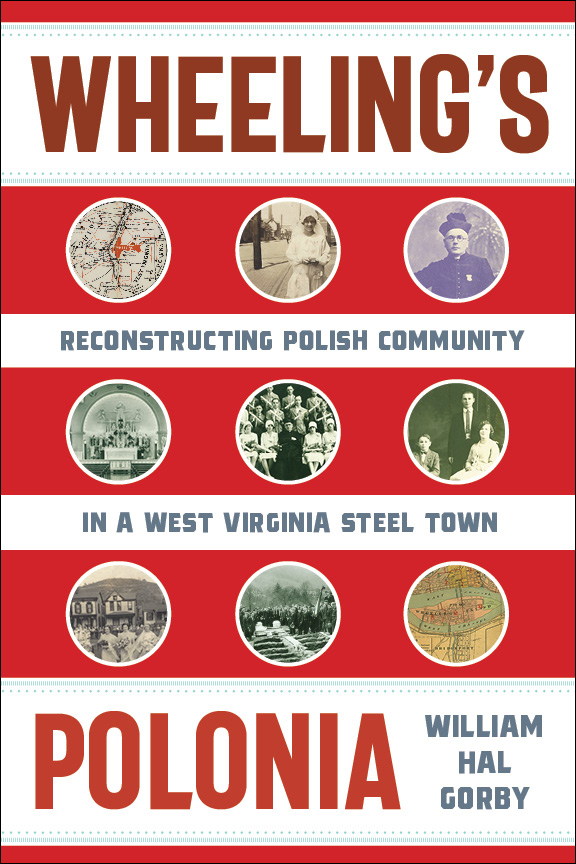
 People’s Power: Reclaiming the Energy Commons
People’s Power: Reclaiming the Energy Commons
By Ashley Dawson
Publisher: OR Books
Recommended by Nicholas Ostrum
Ashely Dawson’s People’s Power: Reclaiming the Energy Commons offers an incisive appraisal of our current carbon age dilemma. In order to keep global warming in check and escape what the author frequently refers to as ecocide, the world needs to abandon fossil fuels and replace them with nascent but promising forms of green, and especially solar, energy. For Dawson, however, this means not only an energy transition to zero-carbon production but also a revolution in the way society approaches energy in the first place. Rather than a commodity to be purchased and sold for profit, energy must be considered part of the commonweal, owned by and deployed for the good of the community. In arguing this point, People’s Power pulls together numerous disparate discursive threads: the commons and their commodification, neoliberalism and pollution, the Occupy movement and the Arab Spring, Trumpism and Jair Bolsonaro’s xenophobic nationalism, and, ultimately, green energy and energy democracy. It is difficult to speak of all these things together, but Dawson does an admirable job of excavating their shared, conflictual space in the expansionary capitalist world-system. He then traces the idea of an energy commons from a 1926 Pennsylvania state legislature meeting through the Tennessee Valley Authority and the Rural Electrification Administration to more localized and contemporary efforts to democratize energy distribution in Michigan, Arizona, and New York.
His most illuminating example, however, is the Energiewende of Germany, which he identifies as a convergence point between various democratic and Autonomen environmental discourses and therefore a potential framework for wider efforts to promote clean energy production through the municipalization of energy utilities. Though often appealing at its face, Dawson sometimes downplays the chasm between community initiatives and their potential for national and international application. One need only consider the politics of coal and fracking in America’s rust belt, or Poland’s opposition to cutting coal as counter examples to supposedly shared understandings of the collective interest. Or, one can consider the hardening of global warming denialism especially within communities economically dependent on hydrocarbon production. That said, a genuine energy revolution requires big, creative ideas. The program promoted here, restoring power to the commons, is certainly ambitious and, despite its communitarian idealism, intriguing.
 Wheeling’s Polonia: Reconstructing Polish Community in a West Virginia Steel Town
Wheeling’s Polonia: Reconstructing Polish Community in a West Virginia Steel Town
By William Hal Gorby
Publisher: West Virginia University Press
Recommended by Hélène B. Ducros
The story of South Wheeling’s Polish immigrants that William Hal Gorby tells in his latest book is also the story of West Virginia’s industrial ups and downs from the perspective of successive migration waves in the upper Ohio River Valley from the late nineteenth century on. When Poles left their rural homelands in the early twentieth century to settle in multi-cultural America, they recreated communities with distinct identities and familial ties, often fostering translocal connections with the villages they had left and cultivating a strong attachment to an imagined community. The book relates the lived experiences of these early labor immigrants into small-town America and the ways in which they negotiated the pulls between religious traditions and Catholic Polish heritage, consumerist ethos and Americanization, and the formation of labor and class consciousness at the heart of the socio-industrial complex. In particular, this micro-history of the Parish of St. Ladislaus, driven by the steel workers of Wheeling’s “Polish Town,” “Polonia,” or “Stanisławówo,” demonstrates more widely the fundamental role immigrants played in the development of American labor movements and the history of industrial strikes in the US. Embedded into the layers of individual and familial chronicles are histories of prejudice and discriminatory legal enforcement against Poles, for example during the Prohibition, but also accounts of how labor organizations constituted one way to acceptance in American society in the inter-war period.
This highly readable book highlights the methodological value of place-based historical analysis of regular people’s lives to grasp wider dynamics of European labor settlement in the US. Specifically, Gorby convincingly advocates for a better inclusion of medium-size towns in the study of industrial immigration and urban history, as the intimate storylines he produces reveal invisible and multi-dimensional processes of class formation and the many ways in which class and religious identities are co-constitutive of urban spaces dominated by immigrants. Through the experiences of Polish “ethnic Catholics,” the book clearly depicts how labor and religion combine to create migrant industrial narratives and how religious consciousness has contributed to unionization in the US. The book is not only ideal reading for the study of the history of migrations in industrial small-town America, but it also constitutes a useful model for other local or regional investigations around various economies, societies, and transnational labor migrant networks. This volume will certainly appeal to labor historians, migration and religious studies scholars, and to the many Americans and Europeans interested in learning about those pioneer migrants from the eastern part of Europe who are part of America’s economic history and forged its multi-culturality, just as newcomers today play their part in the socio-economic history unfolding in the present.




